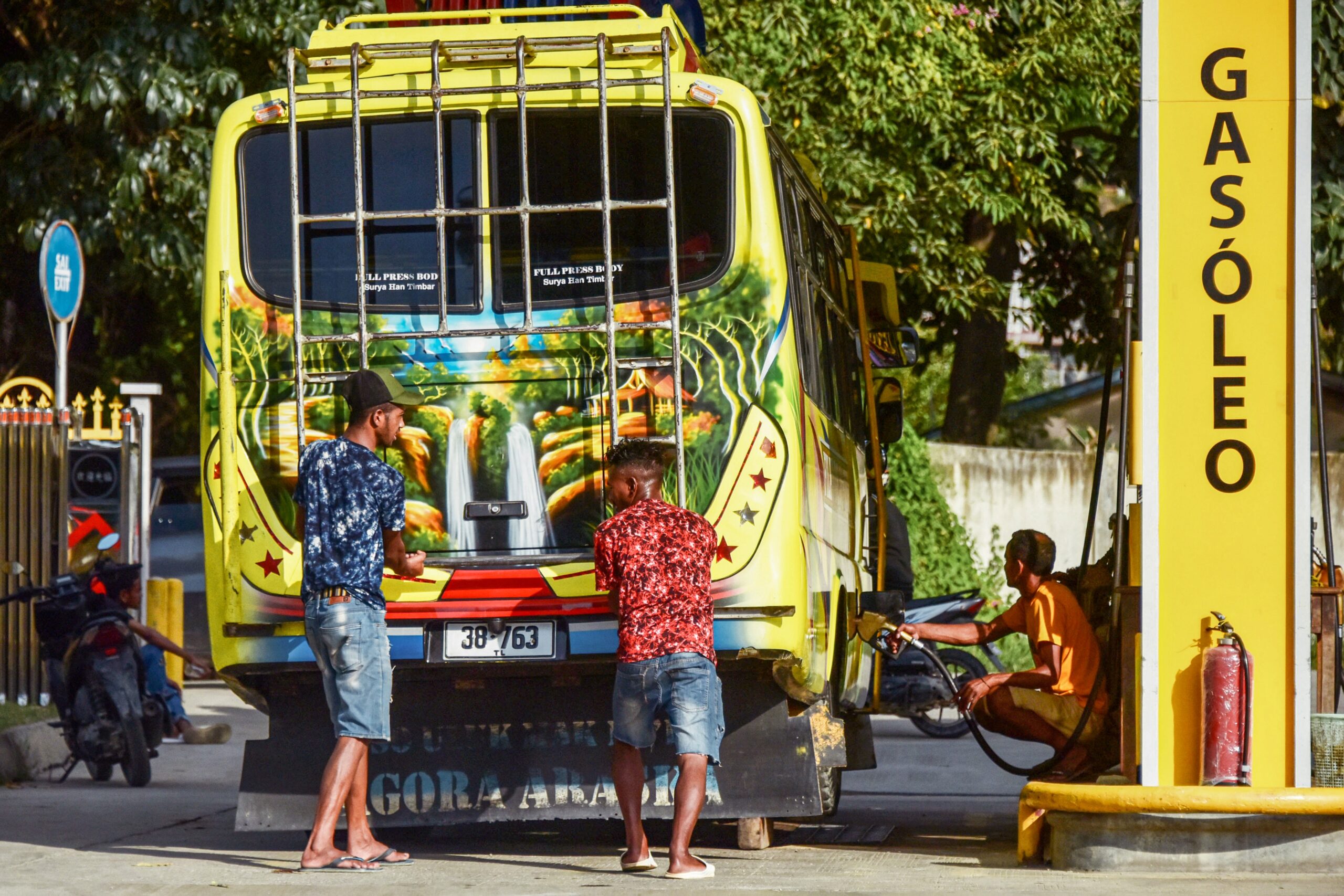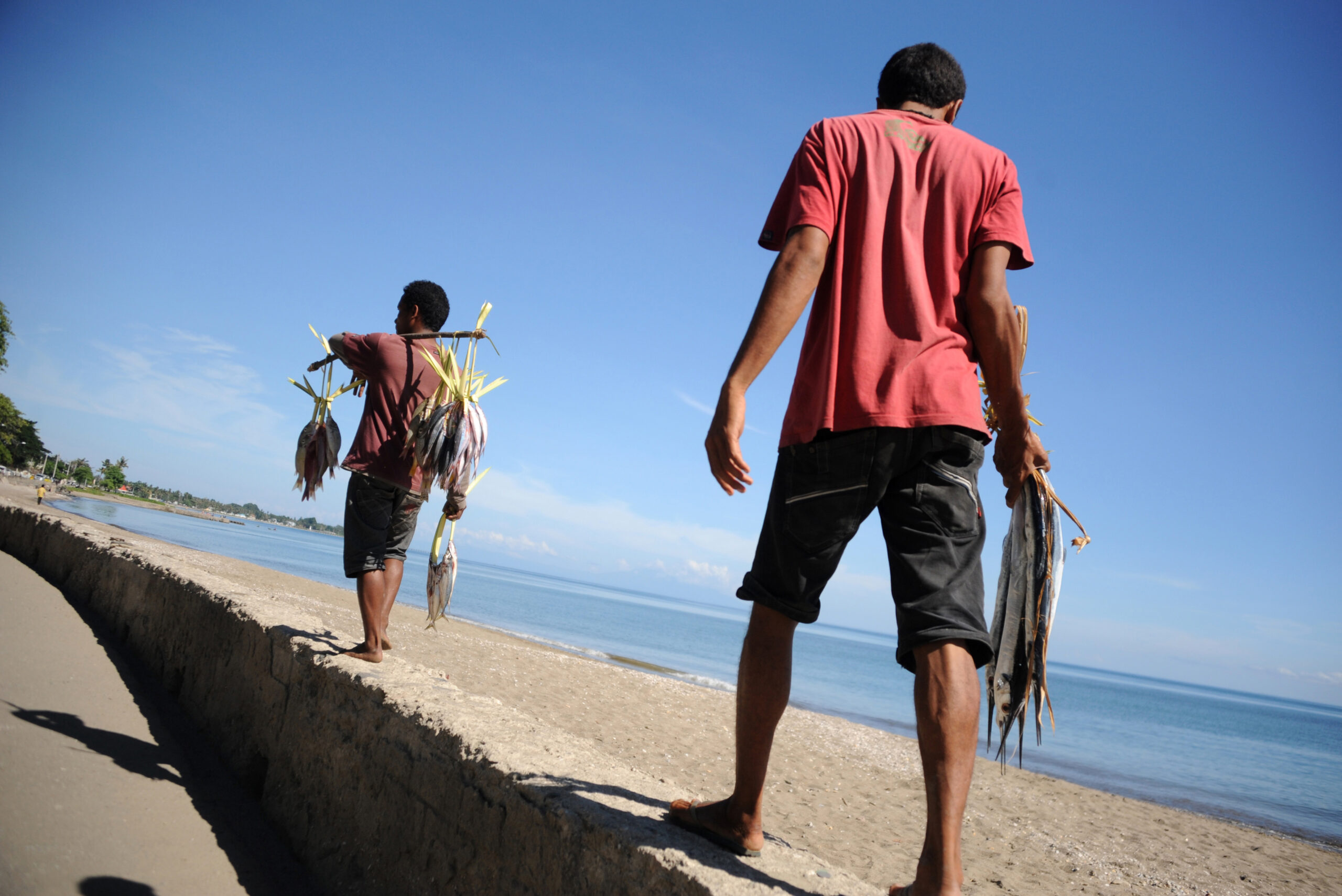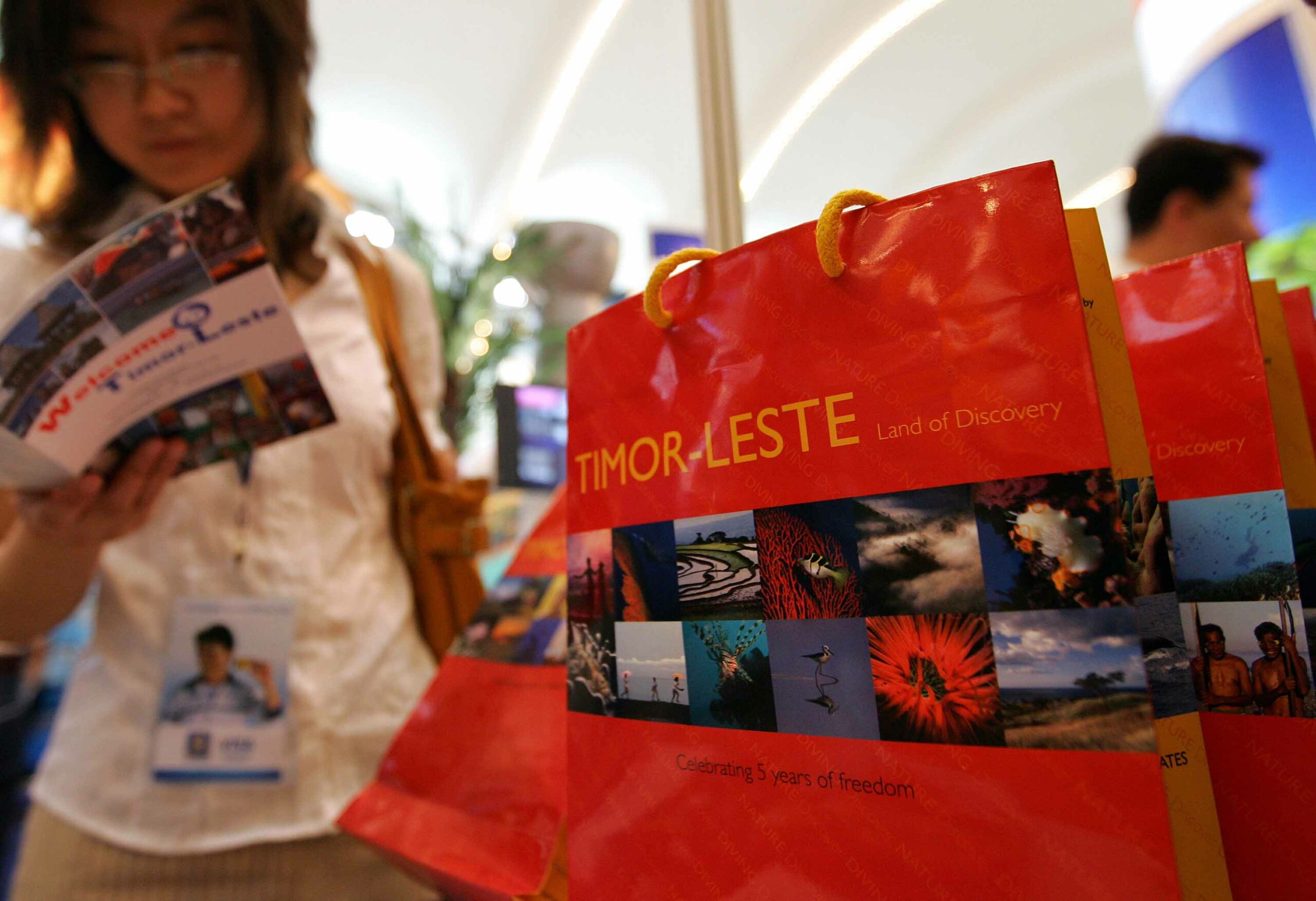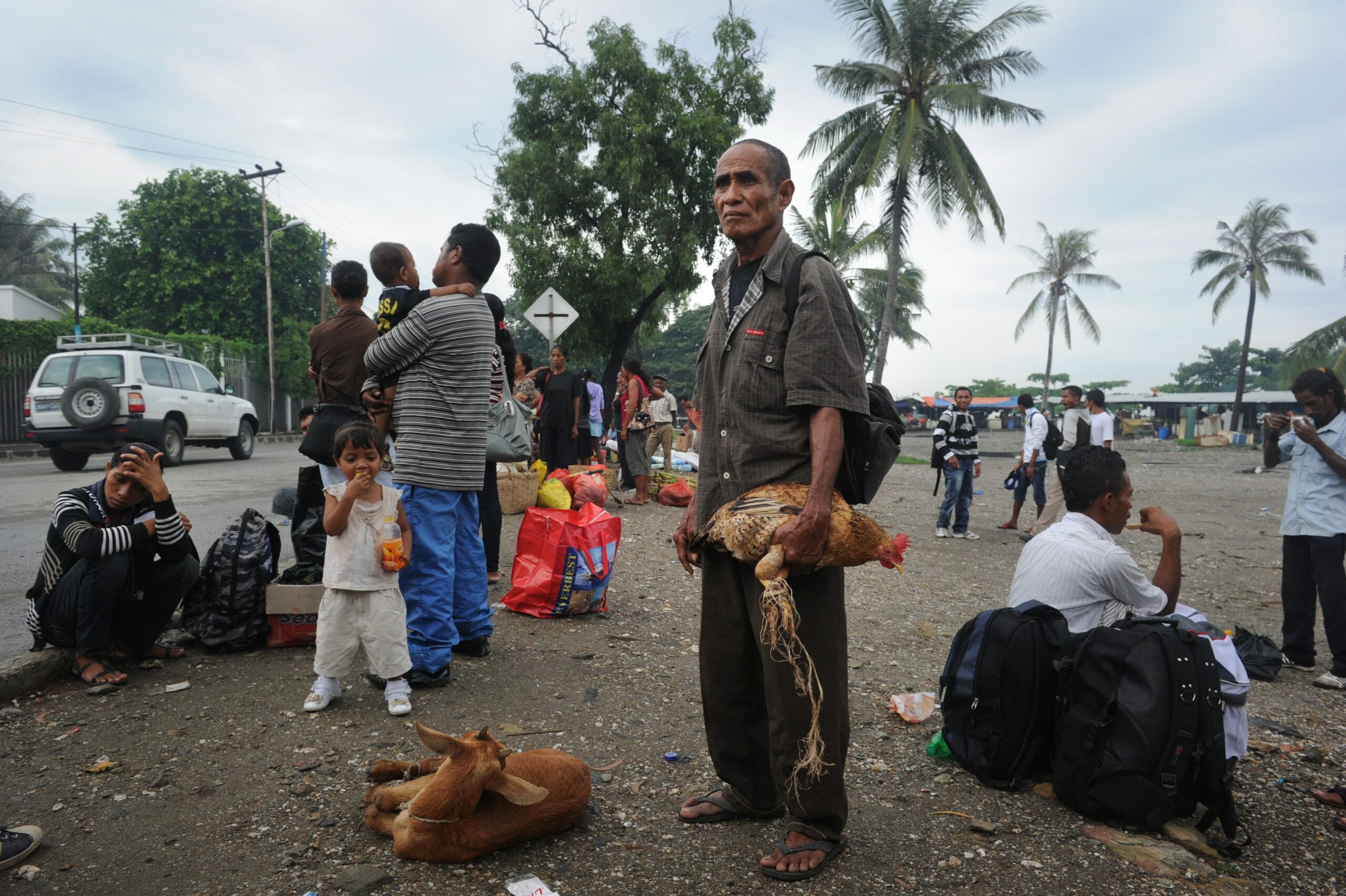Joana Bobo Tanu has been passing down the art of weaving Tais to her daughter and other girls like her for years. She believes the traditional Timorese textiles could help the country ultimately thrive.
“I am proud to be training new generations to weave Tais,” Tanu said. “Timorese people can always count on this traditional business for their future and that of their families.”
But economists say it’ll take much more than local start-ups or family businesses to keep the country from going under. They estimate Timor-Leste has approximately ten years left before announcing state failure. If the Southeast Asian nation doesn’t swiftly adopt new economic alternatives outside of the oil and gas industry, the country may come to a dramatic halt.
Alongside Tanu and other craftspeople, local farmers are also contributing to the fight for the country’s survival.
As one of the youngest countries in the world, Timor-Leste has been struggling to achieve full economic independence for two decades. Initially, the oil and gas sector seemed the most profitable way to accomplish this goal, but now that resources in the Timor Sea are almost exhausted, it’s clear the nation needs to look for new alternatives.
Current oil revenues in Timor-Leste are expected to terminate in early 2023, with a sovereign wealth fund of $17 billion and national annual expenditures of almost $2 billion, the country will likely run out of funds by 2030, according to economic experts.
“Economic diversification is a potential way for Timor-Leste to gradually step away from its dependency on oil revenues as the fuel energy supplies are limited,” prominent Timorese geoscientist Belazario Gusmão told the Globe.

Experts like Gusmão say farming is the most common source of income for the Timorese people and could work as an alternative to oil and gas exploration. But because farming activities are mostly run by families, and they often serve as self-sustenance, the Timorese government has been overlooking the potential of farming as a primary source to boost economic growth.
Babaday Pay, a rice farmer in Baucau, northeast Timor-Leste, is saving personal funds and seeking financial aid to build a small dam in a local river to ramify its watercourse so that farms can produce rice all year round.
Currently, rice paddy plantations are only possible during the rainy season, and the revenues are often insufficient to cover the living costs of local families until the following year.
“We often have to buy [rice] from other farmers and then sell the product to the MTCI [Ministry of Tourism Trade and Industry of Timor-Leste] because our production is not enough,” said Pay. “We need more support to survive, meaning not only more money but also more trust in the young generation.”
Jose Martins Amaral, an okra farmer in Dili, on the northern Timorese coast, knows that the great potential of Timorese soil can make a difference. Today, he’s seeking to plant other types of vegetables, such as tomatoes and chillies, to ensure his family’s year-long sustenance. To expand profit, he started to sell okra in supermarkets on the outskirts of Dili, as well as through live videos on social media.
“I think if the government supported youth’s training programs and local activities like farming, […] agriculture could effectively contribute to our society’s development,” Amaral said
Many farmers such as Pay and Amaral hope the government steps up and supports local businesses to produce crops throughout the year.
The government seems to have very little trust in local businesses. While it allows major bank loans to build oil refineries, it only allows small credits to farmers and local businesses, which is often inaccessible because of the strict bank requirements
For many local Timorese, financial autonomy separated from the state means true freedom.
“We want to be independent and not sell our products through the government,” Pay said.
Harvesting the land and drilling for oil are not the only available resources in Timor-Leste. As almost 70% of the country is covered by the ocean, the government could also consider further investment in the fishing and tourism sectors.

“It is crucial to diversify the national economy before the current petroleum funds run out,” Gusmão warned.
Running out of time
Timor Leste is a country with fertile soil, extensive cultivable areas and with over a centenary history of coffee cultivation. Analysts say that expanding the agriculture sector could be one effective way forward for the country’s hurting economy.
However, the industry remains highly underdeveloped. An International Monetary Fund (IMF) report stated that Timor-Leste needs to transform the current “predominantly subsistence-oriented agricultural sector into a commercially viable sector,” to ensure production growth and sustainable food security.
The report recommends that the Timorese government should also increase its support for a private sector-led economy, where individual business and farm owners lead the national economy through non-government related activities such as agriculture, manufacturing and hospitality, as active oil fields – which account for more than 85% of the country’s revenues – are drying up.

Guteriano Neves, an independent policy analyst and former Economic Development Policy Adviser at the Prime Minister’s Office of Timor-Leste, also believes that economic diversification is the only effective way for the country to not only obtain financial independence but also a way towards success for a new generation of Timorese.
“The oil industry gives high revenues to the government, but not the people,” Neves said. “It also does not have a backward linkage with the domestic economy and does not generate enough employment for locals. An economy that is highly dependent on petroleum like Timor-Leste, in many ways, is not sustainable, not inclusive and not equitable.”
The current major petroleum asset in Timor-Leste is produced in the Exclusive Economic Zone (EEZ) of Bayu Undan Field, which has been operating since February 2004. The field has provided the country with $24 billion in revenues since its inception but is expected to run out of resources between October 2022 and early 2023.
Among other sources of income from the petroleum industry, there was the Kitan oil field operated by Italian energy company Eni, from 2011 to 2015, during which it generated almost $400 million in revenues.
An economy that is highly dependent on petroleum like Timor-Leste… is not sustainable, not inclusive and not equitable”
Guteriano Neves, independent policy analyst
Now, many look at gas fields such as the new Greater Sunrise and Chuditch as hopes for Timor-Leste’s future. The former, operated by Australian-based Woodside, is estimated to generate $50 billion in profit, while the latter can generate $3-18 billion in profit from the moment they are fully developed. If constructions begin in late 2022, Timor-Leste could start benefiting from its revenues from 2025.
Yet even in the best possible scenario statistics show the country will still face severe economic challenges if it doesn’t change its priorities. Significant gaps in health, education, and nutrition, as well as the lack of formal jobs and high youth unemployment rates, are also impacting the country’s stability.
“Timorese people over the course of history have shown dedication, commitment, persistence, and more importantly, their resiliency,” Neves said. “They have audaciously endured many wars, cycles of violence, centuries of colonialism, and brutal military occupations.”
Neves views the development of agriculture, tourism and light manufacturing as the key to overcoming the current socio-economic problems across Timor-Leste, including malnutrition and food insecurity.

Although almost 40% of Timorese citizens are between five and 19 years old, Timor-Leste has been allocating only 8% of the state budget to education and less than 2% to agriculture. It’s a surprise for many, as agriculture is the principal livelihood of about two-thirds of Timorese.
“Timor-Leste’s spending for health, water and education infrastructure in 2011–2018 was so low that the World Bank rounded them off to zero,” Charles Scheiner wrote in his survey article on Timor-Leste’s economy in 2021.
The country has the third-highest child stunting rate of 51.7%, only surpassed by Burundi and Eritrea. The risk of the Petroleum Fund depletion over the next decade means that the Timorese people could face higher poverty and child stunting rates.
However, part of the population is reluctant to believe that the country will be able to see a quick recovery unless it revises its spending habits. Neves argues that “the current level of spending is so big that it goes beyond the country’s economic capacity.”
“It is like living beyond our means,” Neves said. “Watching how the economic situation unfolded in Sri Lanka should remind us of the risk that lies ahead if we continue our business as usual.”
A way forward
The country’s geographical location is one of Timor-Leste’s greatest advantages. As it is located in a strategic maritime area, Timor-Leste could become a key player in the region’s trade industry, according to Gusmão.
He suggested that agriculture could become another valuable alternative since, along with forestry, it already makes up over 60% of available domestic resources. Although never really considered a priority, the mining industry remains a viable source of income for the country, which has several sources of manganese and chromite minerals, as well as other metallic minerals ready to be explored.
But what is more directly accessible to the citizens is farming and small start-ups. As local farmers work hard to increase their production and expand their sales to the international market, local craftsmen are turning to startups and small business models.

Many locals are returning to the country’s Tais, handwoven traditional textiles as one way to bring in local profits. UNESCO placed Tais on the 2021 list of ‘Intangible Cultural Heritage in Need of Urgent Safeguarding,’ as the practice of creating the textiles is a cultural element that illustrates the identity and social class of the nation.
As a UNESCO heritage, Tais weaving plays a key role in local communities, especially in bolstering women’s empowerment and financial stability. Women create traditional pieces of clothes using locally produced cotton and natural colouring plants and are responsible for training new generations and passing on the art of weaving.
Tanu’s family, who lives in Oe-Cusse District, a south-western Special Administrative Region, has been involved in the business for generations.
“I started learning to weave Tais when I was just a child,” Tanu said. “This is what I and my family have always done. Although over the years the business has grown and developed, I wish it could grow even bigger and become one of the main economic sources of Timor-Leste.”
As international fashion influences communities in urban areas, Tais clothing production is becoming less popular. But Tanu has not lost hope. Her family and her weavers are learning to produce modern clothes so they can expand their business to a wider group of customers.
While the government does not provide financial aid to local and traditional businesses, the community often relies on the help of international non-profits and local social enterprises. Tanu hopes the government will start allocating public funds to local businesses like hers and remains confident that they can “grow stronger even with our own resources, as we have always done.”
“It is very important for our future as a community that we pass on the culture and traditions that our ancestors developed for us,” Tanu said. “Since before independence, what held us together was nothing but our culture. No matter what, this is also what will help us in the future.”


